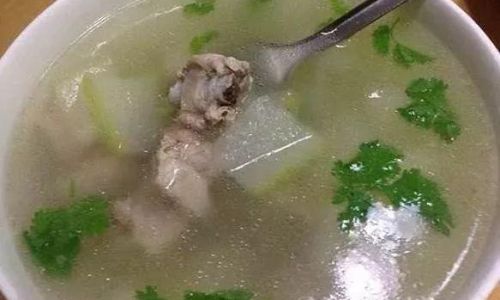Introduction
Freshwater snails, commonly known as field snails or simply snails in various culinary contexts, are a popular delicacy in many parts of the world, particularly in Asian cuisines. Their tender texture and rich flavor make them an ideal ingredient for dishes like escargots, stir-fries, and soups. However, enjoying these aquatic mollusks comes with a crucial preliminary step: cleaning them thoroughly to ensure food safety and enhance their taste. This guide will walk you through the comprehensive process of how to clean freshwater snails effectively, from preparation to final rinsing, ensuring that every aspect of hygiene is addressed.
Understanding Freshwater Snails
Before diving into the cleaning process, it’s essential to understand the biology and habitat of freshwater snails. These creatures typically inhabit slow-moving or stagnant freshwater bodies such as lakes, ponds, and rice paddies. Their diet consists mainly of algae, decaying plant matter, and sometimes small aquatic organisms. As a result, their shells and bodies can accumulate mud, algae, and other impurities.
Freshwater snails have a spiral shell that protects their soft body, which includes a foot used for movement and a respiratory siphon that extends outside the shell for breathing. The internal organs, including the digestive tract, are enclosed within the soft tissue, making thorough cleaning vital to remove any potential contaminants.

Preparation for Cleaning
-
Gathering Equipment
- A large, clean bucket or container
- A strainer or colander
- A brush with soft bristles (an old toothbrush can be repurposed)
- A knife or scissors (for cutting off the snail’s tail, if desired)
- Running tap water
- Salt (optional, for drawing out dirt and parasites)
- A clean cloth or paper towels
-
Selecting Fresh Snails
- Choose live snails that are active and have intact shells. Avoid those with cracked shells, discolored bodies, or an unpleasant odor, as these may indicate decomposition or illness.
- Live snails will often extend their siphon out of the shell to breathe or respond to touch.
Step-by-Step Cleaning Process
-
Initial Rinse
Place the snails in the large bucket or container and rinse them under running tap water to remove any loose dirt or debris. Be gentle to avoid damaging their shells.
-
Soaking
- Fill the bucket with enough clean water to fully submerge the snails. Add a handful of salt (about 1/4 cup per gallon of water). The salt helps to draw out dirt, parasites, and other impurities from the snails’ bodies. Let them soak for about 30 minutes to an hour.
- During this time, you may notice some snails伸出 their siphons and expel泥沙or other debris. This is a good sign that the soaking is working.
-
Scrubbing
- After soaking, drain the water and rinse the snails again. Use the soft-bristled brush to gently scrub the outside of each shell. Pay attention to the crevices and ridges where dirt can accumulate.
- If you plan to consume the snail’s foot (the edible part), you may need to cut off the tail end of the shell. This can be done with a sharp knife or scissors, but be cautious not to cut into the flesh. Cutting the tail can make it easier to extract the meat later, but it’s optional and depends on your recipe.
-
Rinsing and Repeating
Rinse the snails thoroughly under running water again to wash away any remaining dirt or salt. Repeat the soaking and scrubbing process if necessary, until the water runs clear and the shells appear clean.
-
Inspecting Each Snail
Individually inspect each snail to ensure it’s clean. Look for any remaining debris inside the shell or on the surface. Discard any snails that appear damaged or unhealthy.
-
Final Rinse and Draining

Give the snails a final rinse under clean, running water. Place them in a strainer or colander to drain excess water. Let them sit for a few minutes to ensure they’re not dripping wet before proceeding with cooking.
Additional Tips for Safe Consumption
-
Cooking Temperature and Time
Cooking snails at a high enough temperature for a sufficient duration is crucial to kill any harmful bacteria, viruses, or parasites that may still be present. Aim for an internal cooking temperature of at least 145°F (63°C) for several minutes, depending on the size of the snail.
-
Avoid Cross-Contamination
Use separate utensils and surfaces for handling raw and cooked snails to prevent cross-contamination. Wash your hands thoroughly after handling raw snails and before touching other food items or utensils.
-
Storage
If you’re not cooking the snails immediately after cleaning, store them in a sealed container in the refrigerator for no longer than 24 hours. Keep them in a single layer if possible to prevent crushing the shells.
Conclusion
Cleaning freshwater snails may seem like a daunting task, but with the right tools and techniques, it becomes a manageable and rewarding process. By following the steps outlined in this guide, you can ensure that your snails are not only clean but also safe for consumption. Remember, the key to successful cleaning lies in patience, attention to detail, and adhering to food safety practices. With these principles in mind, you can confidently incorporate freshwater snails into your culinary repertoire, enjoying their unique texture and flavor in a variety of delicious dishes.
Whether you’re preparing a traditional French escargot, a spicy Asian stir-fry, or a hearty soup, the foundation for a successful meal starts with clean, well-prepared ingredients. Freshwater snails, when cleaned properly, can be a delightful and nutritious addition to your diet, offering a taste of the world’s diverse culinary traditions. So, gather your supplies, head to your nearest freshwater source (or market), and embark on your journey to culinary delight with freshly cleaned snails. Bon appétit!






0 comments